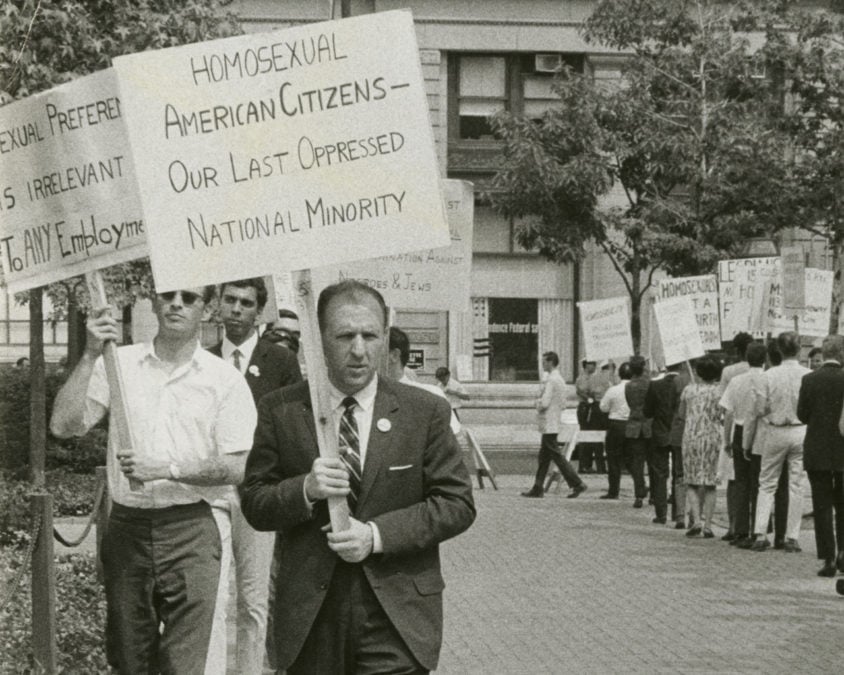In 1953, President Dwight D. Eisenhower declared gay men and lesbians a threat to national security and unfit for government service, inciting a witch hunt and mass firings that lasted more than 40 years.
The virulent campaign also had an unintended consequence — It helped ignite the gay rights movement. The community became outraged, and Frank Kameny was the man who dared to fight back.
“The Lavender Scare”
The powerful documentary “The Lavender Scare,” which will debut on PBS June 18, tells the little-known, dark and disgusting chapter in U.S. history of the government’s relentless effort to purge LGBT employees from the federal workforce. The film also will premiere on pbs.org and the PBS Video App.
Produced and directed by Josh Howard, the documentary is based on the award-winning book by David K. Johnson, “The Lavender Scare.”
Witch hunt
The book drew its title from the term “lavender lads,” used repeatedly by Sen. Everett Dirksen as a synonym for gay men. In 1952, Dirksen said that if Republicans won the November election, “the lavender lads” would be eradicated from the State Department. This fear baiting took place at the height of the Cold War, when gays and lesbians, who were called perverts and considered worse than Communists, had allegedly “infiltrated” the State Department.
The expression was also used by Confidential magazine in the 1950s and 60s, which gossiped about the sexuality of politicians and famous Hollywood stars.

Frank Kameny leads a picket line in front of Independence Hall in Philadelphia on July 4, 1965, four years before the Stonewall uprising in New York City. Photo: New York Public Library.
Frank Kameny fights back
In 1957, after being questioned about his homosexuality by two civil servants, a Harvard-trained astronomer working with the U.S. Army’s Map Service became the first person to fight his dismissal. Instead of arguing against the prevailing opinion that homosexuality was immoral, Kameny reframed the issue as one of civil rights — discrimination against a particular group — and his attempts to regain his job evolved into a lifelong battle for the rights of LGBTQ people until his death in 2011.
On April 27, 1953, Eisenhower signed Executive Order 10450. That document cemented federal employment security standards and outlawed gays and lesbians from working in the federal government. As a result, hundreds of gays and lesbians were outed and fired from the State Department.
Persecuting gay people
Approximately 5,000 gays and lesbians were fired and tens of thousands of government workers (including private contractors and military personnel) were intimidated, harassed and investigated, confronted with information from anonymous informants and threatened with exposure. The vicious persecution also lead to countless people committing suicide.
Executive Order 10450 stayed partly in effect until 1995 when President Bill Clinton rescinded the order and put in place the “Don’t ask, don’t tell” policy for admittance of gays into the military.
